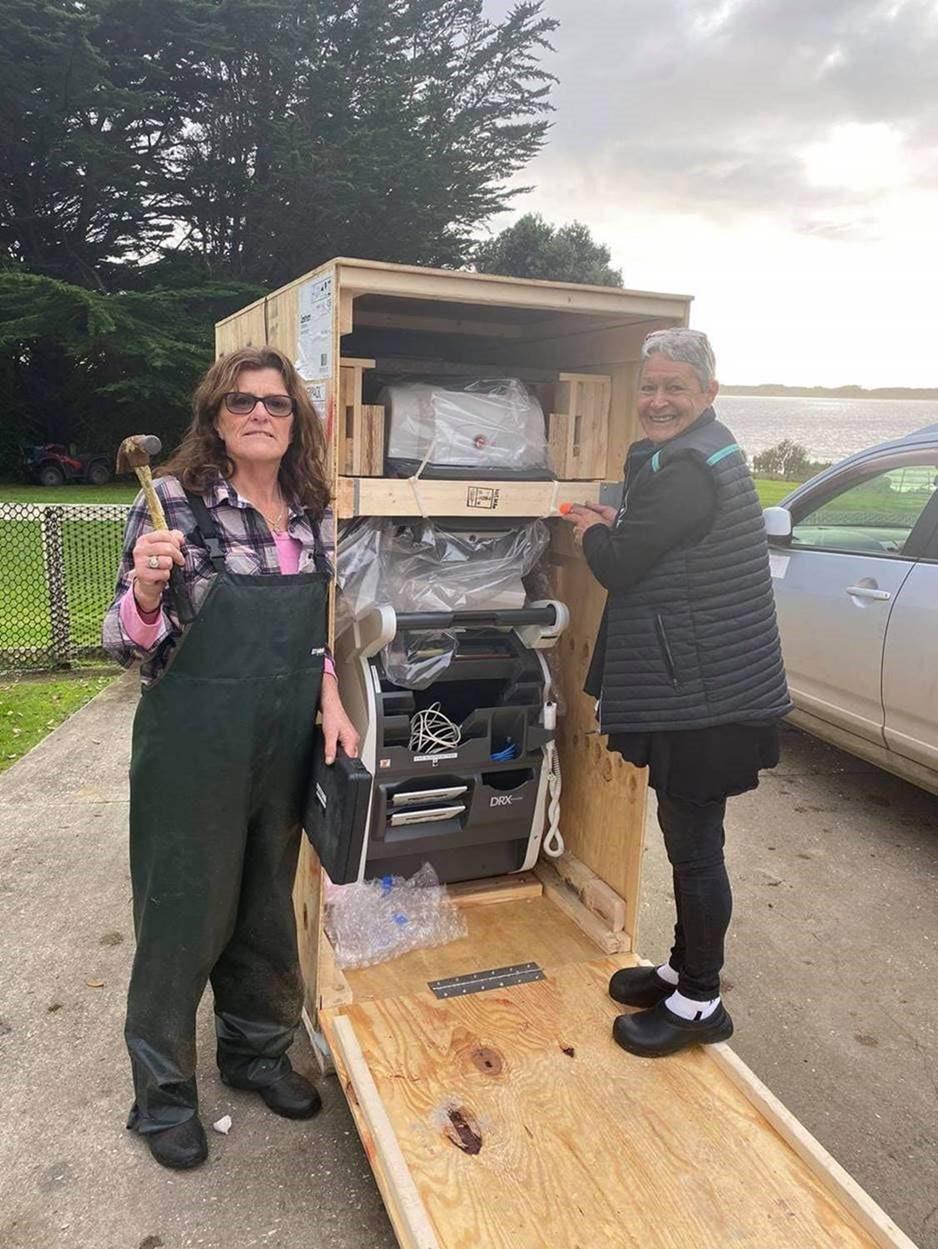our stories – a– ta–tou ko–rero
19 July 2021
Hyperbaric Unit accredited for training The Christchurch Hyperbaric Medicine Unit, Te Whare Hau o Te Hau Ora, has been accredited for advanced training in Diving and Hyperbaric Medicine by the Australian and New Zealand College of Anaesthetists (ANZCA). Accreditation means the unit can finally train medical specialists in Diving and Hyperbaric Medicine and is important for the sustainability of the national service, says Clinical Director Greg van der Hulst. The unit at Christchurch Hospital is one of only two in New Zealand, and, alongside the Slark Hyperbaric Medicine Unit at Waitemata DHB, provides hyperbaric oxygen therapy services for acute and elective conditions for all New Zealand.
From left, Clinical Director Christchurch Hyperbaric Medicine Unit Greg van der Hulst and
Hyperbaric Fellow, Kenneth Lo “The approval from the ANZCA Absent: Hyperbaric Medicine Unit Training Supervisor Roxanna Sadri means Christchurch now joins the five Australian Hyperbaric Units that are The subspecialty of Diving and Hyperbaric Medicine (DHM) already accredited for training by ANZCA. It’s an exciting has two main areas; Diving Medicine which is mainly milestone in the history of our department.” involved in the prevention and treatment of diving-related Over the years, permanent medical, nursing and technical injury, and Hyperbaric Medicine, the treatment of specific staff were intermittently recruited but there were no medical conditions with hyperbaric oxygen. accredited training positions in Diving and Hyperbaric “Diving and Hyperbaric medicine in the South Island of Medicine for medical, nursing or technical trainees in New New Zealand began in Christchurch in 1973 with a trial of Zealand, Greg says. hyperbaric oxygen (HBOT) to enhance radiotherapy for “Without the ability to train the next generation of Diving patients with head and neck cancers.” and Hyperbaric physicians, technicians and nurses, small It was also used to treat acute problems such as subspecialised areas like this tend to lurch from one decompression sickness and carbon monoxide poisoning. staffing crisis to the next.” “In the late 1970s, the local diving community raised the Fortunately, Christchurch Hospital’s Emergency money for a dual-lock chamber which was donated to the Department developed subspecialisation Fellowship North Canterbury Hospital Board,” Greg says. positions, including one for Diving and Hyperbaric
Medicine around the same time ANZCA training accreditation was achieved. “The current Hyperbaric Fellow in Christchurch is Kenneth Lo and the positive benefits of this are already apparent with sharing of knowledge and an injection of enthusiasm and new ideas for research,” Greg says. The Hyperbaric Unit has also recently developed a training position for a Hyperbaric Technician, another first for New Zealand.
This operated at The Princess Margaret Hospital from 1979 to 1994. The following year the chamber moved to Christchurch Hospital, allowing better access to core services such as Radiology and Intensive Care. In November 2000, the old chamber was replaced with a new, rectangular, walk-in chamber and permanent staff were appointed. This was all achieved during the 30-year tenure of Michael Davis as Hyperbaric Medical Director, realising a goal set back in the early 1980s to establish the Christchurch unit as a comprehensive hospital-based hyperbaric facility. 6





